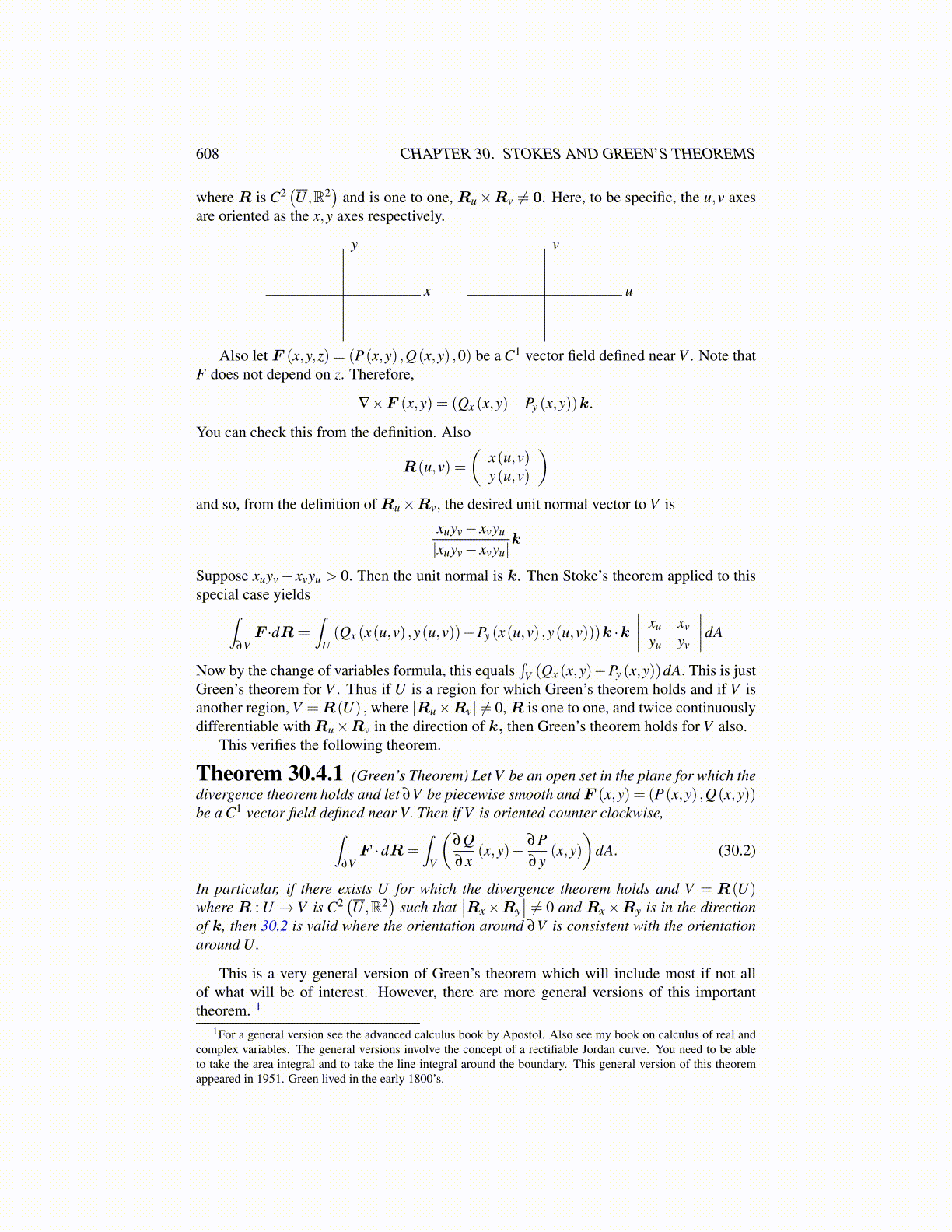
608 CHAPTER 30. STOKES AND GREEN’S THEOREMS
30.6 Exercises1. Determine whether the vector field(
2xy3 sinz4,3x2y2 sinz4 +1,4x2y3 (cosz4)z3 +1)
is conservative. If it is conservative, find a potential function.
2. Determine whether the vector field(2xy3 sinz+ y2 + z,3x2y2 sinz+2xy,x2y3 cosz+ x
)is conservative. If it is conservative, find a potential function.
3. Determine whether the vector field(2xy3 sinz+ z,3x2y2 sinz+2xy,x2y3 cosz+ x
)is conservative. If it is conservative, find a potential function.
4. Find scalar potentials for the following vector fields if it is possible to do so. If it isnot possible to do so, explain why.
(a)(y2,2xy+ sinz,2z+ ycosz
)(b)
(2z(cos(x2 + y2
))x,2z
(cos(x2 + y2
))y,sin
(x2 + y2
)+2z
)(c) ( f (x) ,g(y) ,h(z))
(d)(xy,z2,y3
)(e)
(z+2 x
x2+y2+1 ,2y
x2+y2+1 ,x+3z2)
5. If a vector field is not conservative on the set U , is it possible the same vector fieldcould be conservative on some subset of U? Explain and give examples if it is possi-ble. If it is not possible also explain why.
6. Prove that if a vector field F has a scalar potential, then it has infinitely many scalarpotentials.
7. Here is a vector field: F ≡(2xy,x2 −5y4,3z2
). Find
∫C F ·dR where C is a curve
which goes from (1,2,3) to (4,−2,1).
8. Here is a vector field: F ≡(2xy,x2 −5y4,3
(cosz3
)z2). Find
∫C F ·dR where C is a
curve which goes from (1,0,1) to (−4,−2,1).
9. Find∫
∂U F ·dR where U is the set {(x,y) : 2 ≤ x ≤ 4,0 ≤ y ≤ x} and
F (x,y) = (xsiny,ysinx)
10. Find∫
∂U F ·dR where U is{(x,y) : 2 ≤ x ≤ 3,0 ≤ y ≤ x2
}and
F (x,y) = (xcosy,y+ x)